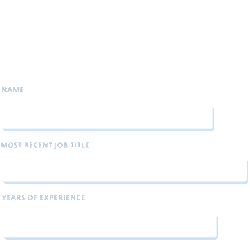Staff Engineering Program Manager
Ford Motor Company Portland , OR 97228
Posted 2 days ago
Imagine the possibilities at Ford! Great ideas evolve into extraordinary products and customer experiences. When you bring passion and dedication to your job, there's no telling what you can accomplish. The Digital Manufacturing Systems team is seeking a highly motivated Staff Engineering Program Manager to help imagine, invent, and implement the technology used to manufacture the next generation of Ford vehicles.
Our environment fosters product innovation, rapid iteration, and a significant amount of autonomy. Our development stack is diverse and includes a wide range of technologies, including low-level and server-side programming. As a Principal Engineer, you will be expected to implement groundbreaking solutions on hardware that has yet to be released.
Our team values fun, camaraderie, learning, and collaboration, and we are looking for someone who shares these values. We hold ourselves and our solutions to the highest standards, which we maintain through constructive code reviews, brainstorming sessions, and pair programming when appropriate. Additionally, we prioritize personal relationships and take the time to get to know each other and our partners.
Sound good? We would love to hear from you.
DMS is looking for a Staff Engineering Program Manager to oversee the Embedded Systems Software Engineering Teams. The successful candidate will be responsible for conducting Scrum Ceremonies, planning Sprints, and tracking the progress of the development team.
A Product Owner plays a crucial role in a software engineering team, acting as the bridge between stakeholders and the development team. Here are some common expectations of a Product Owner:
Define and Communicate the Product Vision: Clearly articulate the vision and goals for the product, ensuring that all team members and stakeholders understand the direction of the project.
Manage the Product Backlog: Create, prioritize, and maintain the product backlog, ensuring that it reflects the most valuable features and tasks for the team to work on.
Prioritize User Stories: Work closely with stakeholders to gather requirements and prioritize user stories based on business value, customer needs, and technical feasibility.
Collaborate with Stakeholders: Regularly engage with stakeholders, including customers, users, and business leaders, to gather feedback and ensure that their needs are being met.
Participate in Agile Ceremonies: Actively participate in Agile ceremonies such as sprint planning, daily stand-ups, sprint reviews, and retrospectives to ensure alignment and facilitate communication within the team.
Clarify Requirements: Provide detailed explanations and clarifications for user stories and acceptance criteria to ensure that the development team understands what is expected.
Accept or Reject Work: Review completed work and determine whether it meets the acceptance criteria, accepting or rejecting features based on quality and completeness.
Monitor Progress: Track the progress of development against the
A Product Owner plays a crucial role in a software engineering team, acting as the bridge between stakeholders and the development team. Here are some common expectations of a Product Owner:
Define and Communicate the Product Vision: Clearly articulate the vision and goals for the product, ensuring that all team members and stakeholders understand the direction of the project.
Manage the Product Backlog: Create, prioritize, and maintain the product backlog, ensuring that it reflects the most valuable features and tasks for the team to work on.
Prioritize User Stories: Work closely with stakeholders to gather requirements and prioritize user stories based on business value, customer needs, and technical feasibility.
Collaborate with Stakeholders: Regularly engage with stakeholders, including customers, users, and business leaders, to gather feedback and ensure that their needs are being met.
Participate in Agile Ceremonies: Actively participate in Agile ceremonies such as sprint planning, daily stand-ups, sprint reviews, and retrospectives to ensure alignment and facilitate communication within the team.
Clarify Requirements: Provide detailed explanations and clarifications for user stories and acceptance criteria to ensure that the development team understands what is expected.
Accept or Reject Work: Review completed work and determine whether it meets the acceptance criteria, accepting or rejecting features based on quality and completeness.
Monitor Progress: Track the progress of development against the
Download the
LiveCareer app and find
your dream job anywhere
Staff Engineering Program Manager
Ford Motor Company





